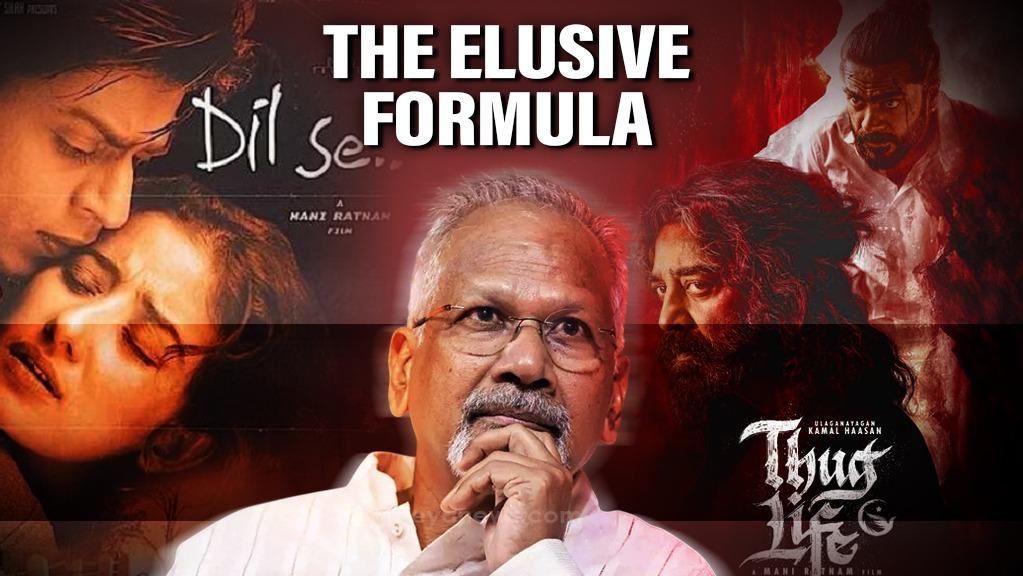

"Thug Life" (2025): A Saga of Unfulfilled Promises
The gangster drama "Thug Life" was released on June 5, 2025, amidst considerable anticipation, marking the reunion of director Mani Ratnam and iconic actor Kamal Haasan after 38 years. Despite a strong opening day collection of ₹15.5 crore, the film saw a rapid decline in its earnings, managing only a modest ₹36.90 crore domestically by its fourth day. It struggled significantly outside Tamil Nadu, and its release was compounded by a controversy that prevented its screening in Karnataka.
Critical Reception: A Tale of Two Halves
The critical response was largely unfavorable, with a near-universal consensus that the film's quality dropped significantly in its second half.
Analysis of Underperformance
The film's commercial and critical failure can be attributed to a combination of factors. The heavy marketing callbacks to the classic "Nayakan" created immense expectations that the final product failed to meet. The core issues, however, appear to be rooted in flawed execution, particularly a weak screenplay and a disjointed narrative structure that attempted to juggle too many underdeveloped themes. In today's cinematic environment, where word-of-mouth spreads instantly, a film perceived as a "missed opportunity" struggles to survive, regardless of the reputation of its cast and crew.
"Dil Se.." (1998): A Cult Classic Born from Initial Rejection
Mani Ratnam's 1998 Hindi film, "Dil Se..," starring Shah Rukh Khan and Manisha Koirala, offers a contrasting story of initial box office failure followed by a significant re-evaluation.
The Context of 1998
To understand the initial reception of "Dil Se..," it's important to consider the India of 1998. Mainstream Hindi cinema was dominated by romantic musicals and family dramas. The dark, politically charged themes of "Dil Se..," which included terrorism, psychological trauma, and a tragic ending, were starkly different from the prevailing cinematic mood. The film's unconventional narrative was out of sync with an audience accustomed to lighter, more escapist entertainment.
Initial Reception and Posthumous Re-evaluation
Upon its release, "Dil Se.." was declared a "Flop" at the Indian box office. However, it was a major success overseas, indicating differing audience sensibilities. The initial critical response in India was mixed, with some finding it lacked the narrative coherence of Ratnam's previous works. However, over the past two decades, "Dil Se.." has been "rediscovered" and is now widely regarded as a cult classic. The very elements that may have alienated audiences in 1998 are now celebrated as its strengths.
Comparative Assessment
Comparing "Thug Life" and "Dil Se.." reveals key differences in their underperformance. Both films highlight that star power and a renowned director are not guarantees of success. However, their paths diverge significantly.
"Dil Se.."'s initial failure can be largely attributed to its unconventional themes being out of step with the audience's tastes at the time. It was a film arguably ahead of its time. In contrast, "Thug Life"'s failure seems to stem from fundamental issues in its execution. The criticisms leveled against it—a weak screenplay, poor pacing, underdeveloped characters—point to a lapse in craftsmanship rather than a bold artistic experiment that didn't connect.
Furthermore, A.R. Rahman's music for "Dil Se.." was a monumental success and a cornerstone of its enduring legacy. For "Thug Life," the music was met with a muted response, robbing the film of a key anticipated strength and making its other flaws more apparent.
While "Dil Se.." faced mixed initial reviews, its artistic merits allowed for a positive critical re-evaluation over time. "Thug Life," having been met with predominantly negative reviews focusing on its basic storytelling flaws, faces a much more challenging path to redemption.
The Unpredictable Nature of Cinematic Success
The stories of "Thug Life" and "Dil Se.." underscore that the recipe for box office success is complex and unpredictable. "Thug Life"'s struggles appear to be a case of flawed execution failing to live up to a grand legacy. "Dil Se..," on the other hand, represents a film that was initially rejected for being too different from the norm but whose artistic strengths ultimately secured its place in cinematic history.
This comparison reveals that while commercial performance is a crucial industry metric, it is not the sole arbiter of a film's value. A film's long-term cultural impact and critical legacy can tell a very different story. The journey of "Dil Se.." shows that challenging conventions can eventually lead to lasting acclaim. The critical question for "Thug Life" is whether its underperformance will be seen as a bold experiment that missed its mark or a more straightforward failure of creative execution. Ultimately, these two films remind us that while a filmmaker's vision may not always find immediate commercial validation, the pursuit of that vision is what contributes to the richness and evolution of the art form itself.